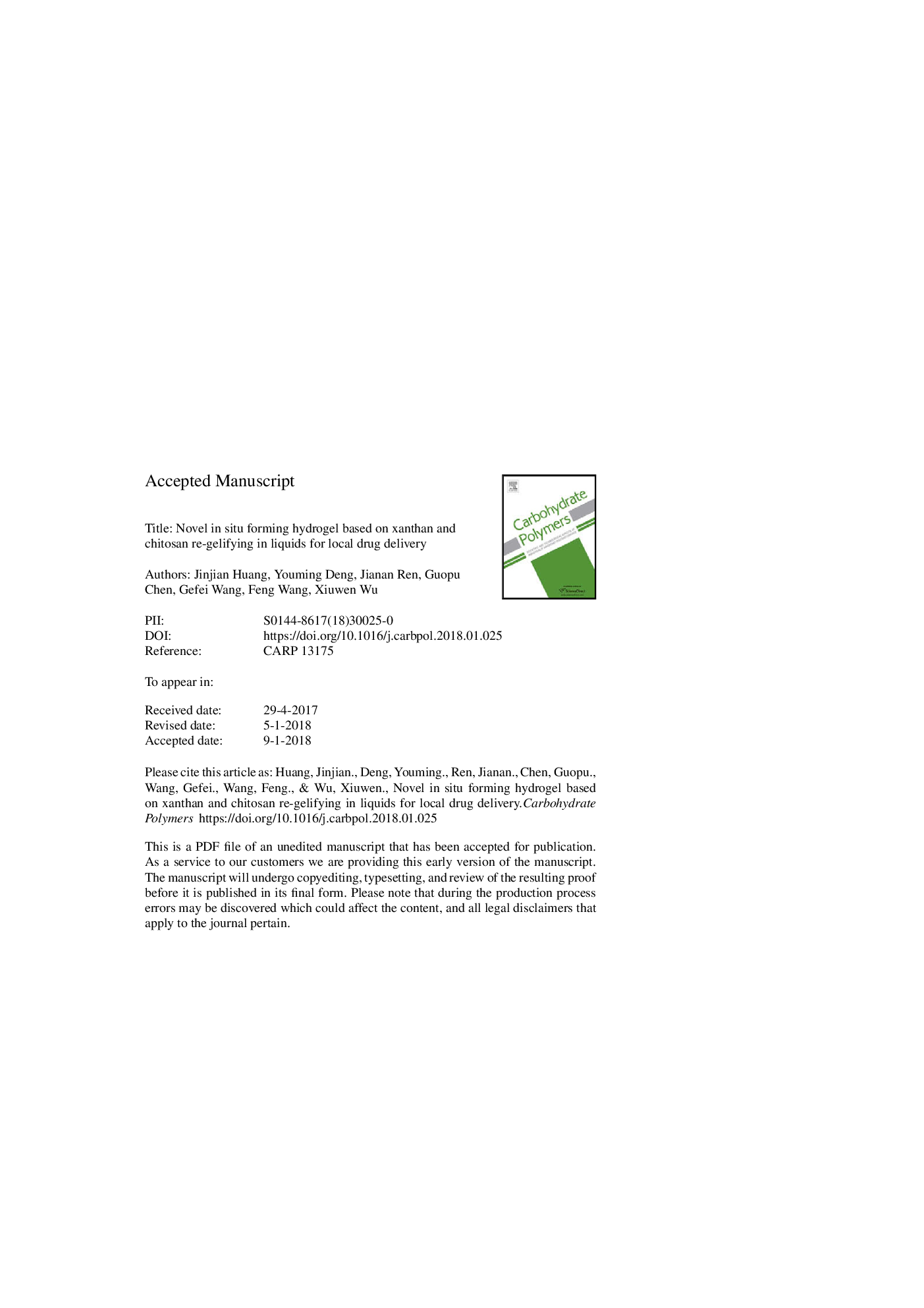| Article ID | Journal | Published Year | Pages | File Type |
|---|---|---|---|---|
| 7783501 | Carbohydrate Polymers | 2018 | 36 Pages |
Abstract
Injectable hydrogels have been an attractive topic in biomaterials. However, during gelation in vivo, they are easy to disperse due to tissue exudates, thus leading to failure of controlled drug release. To solve this problem, we present a novel polysaccharide-based injectable hydrogel via self-crosslinking of aldehyde-modified xanthan (Xan-CHO) and carboxymethyl-modified chitosan (NOCC). The physical properties were optimized by adjusting the mass ratio of Xan-CHO and NOCC. Experiments revealed that this material exhibited the characteristics of self-healing, anti-enzymatic hydrolysis, biocompatibility and biodegradability. The releasing curve demonstrated stable release of BSA-FITC within 10â¯h after injection in liquids. After incorporation with a vascular endothelial growth factor, there was an interaction between this biomaterial and the host, which accelerated the reconstruction of the abdominal wall in rats. Therefore, this injectable hydrogel, as a drug delivery system, can prevent drug outburst in a variety of settings and function as a tissue scaffold.
Related Topics
Physical Sciences and Engineering
Chemistry
Organic Chemistry
Authors
Jinjian Huang, Youming Deng, Jianan Ren, Guopu Chen, Gefei Wang, Feng Wang, Xiuwen Wu,
